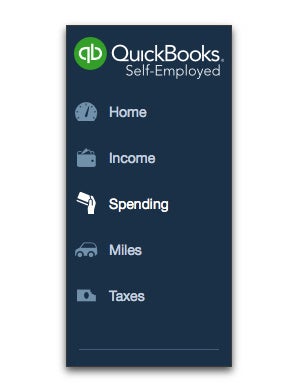QuickBooks Online Self-Employed is small business focused, which is to say that it’s aimed at business owners who are sole proprietors or LLC owners without partners, and who write off business expenses using a Schedule C when filing their personal taxes. The assumption on Intuit’s part is that the people who own these types of businesses often have a commingling of business and personal credit card and bank accounts and that it is often difficult using traditional accounting applications to quickly and easily separate business expenses from personal expenses.
Getting started
To begin using QuickBooks Online Self-Employed you first need to link the bank and credit card accounts you want the application to track. Adding accounts is simple: Use the search field to find your bank, enter your login information, then select the accounts you want to use. As is the case with QuickBooks Online, once you link accounts, QuickBooks Online Self-Employed will continue to automatically import all transactions associated with those accounts.
After your initial import, you have a few tasks. First, you need to categorize your expenses, just like you would in a desktop financial application. Once you categorize an expense from a particular vendor, QuickBooks Online Self-Employed continues to categorize expenses from that vendor in the same way. Every time new transactions are imported, you can verify the expense and make sure the categorization is correct.
SNIP, the article continues @ MacWorld, click here to continue reading.....

0 comments:
Post a Comment